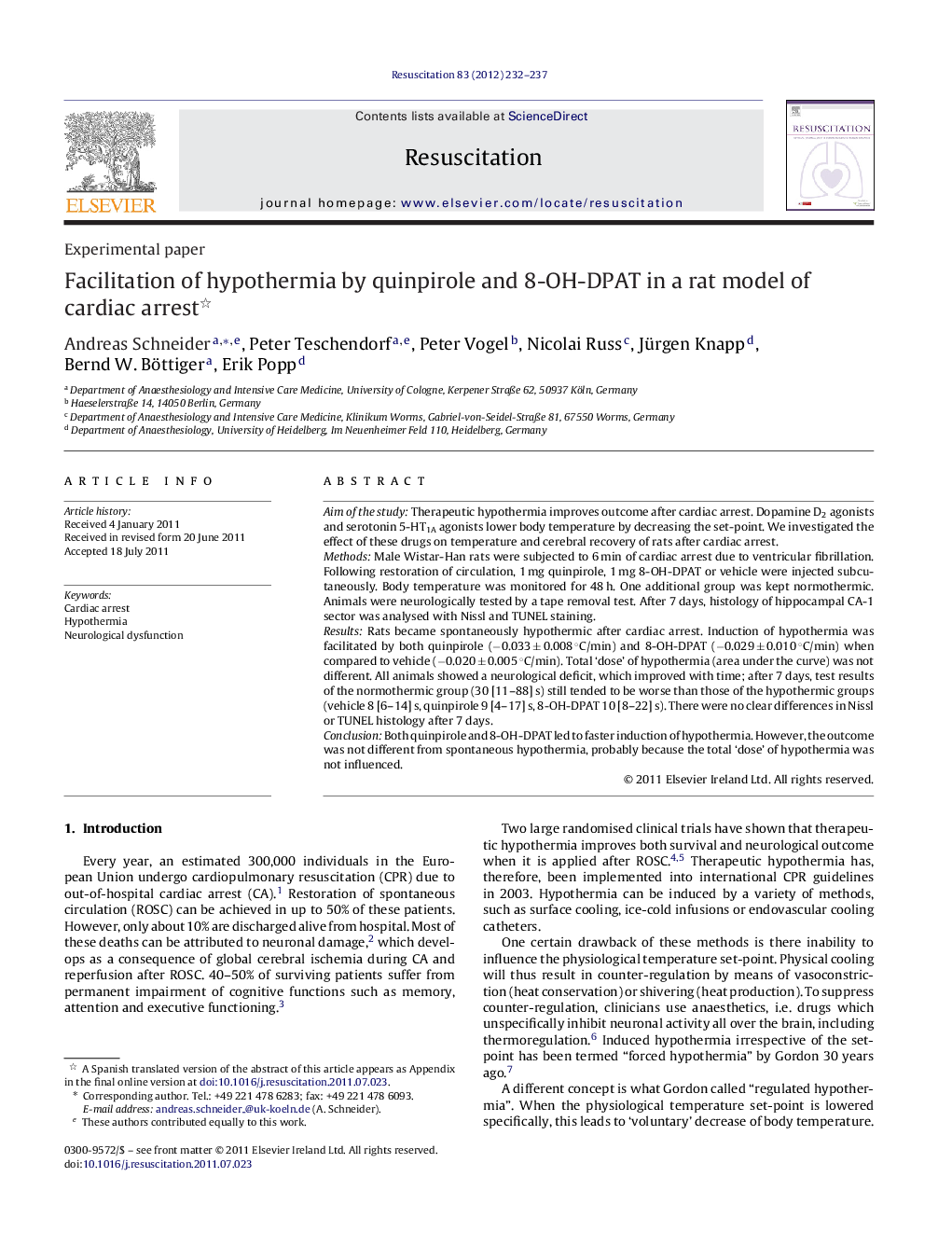| Article ID | Journal | Published Year | Pages | File Type |
|---|---|---|---|---|
| 3009274 | Resuscitation | 2012 | 6 Pages |
Aim of the studyTherapeutic hypothermia improves outcome after cardiac arrest. Dopamine D2 agonists and serotonin 5-HT1A agonists lower body temperature by decreasing the set-point. We investigated the effect of these drugs on temperature and cerebral recovery of rats after cardiac arrest.MethodsMale Wistar-Han rats were subjected to 6 min of cardiac arrest due to ventricular fibrillation. Following restoration of circulation, 1 mg quinpirole, 1 mg 8-OH-DPAT or vehicle were injected subcutaneously. Body temperature was monitored for 48 h. One additional group was kept normothermic. Animals were neurologically tested by a tape removal test. After 7 days, histology of hippocampal CA-1 sector was analysed with Nissl and TUNEL staining.ResultsRats became spontaneously hypothermic after cardiac arrest. Induction of hypothermia was facilitated by both quinpirole (−0.033 ± 0.008 °C/min) and 8-OH-DPAT (−0.029 ± 0.010 °C/min) when compared to vehicle (−0.020 ± 0.005 °C/min). Total ‘dose’ of hypothermia (area under the curve) was not different. All animals showed a neurological deficit, which improved with time; after 7 days, test results of the normothermic group (30 [11–88] s) still tended to be worse than those of the hypothermic groups (vehicle 8 [6–14] s, quinpirole 9 [4–17] s, 8-OH-DPAT 10 [8–22] s). There were no clear differences in Nissl or TUNEL histology after 7 days.ConclusionBoth quinpirole and 8-OH-DPAT led to faster induction of hypothermia. However, the outcome was not different from spontaneous hypothermia, probably because the total ‘dose’ of hypothermia was not influenced.
